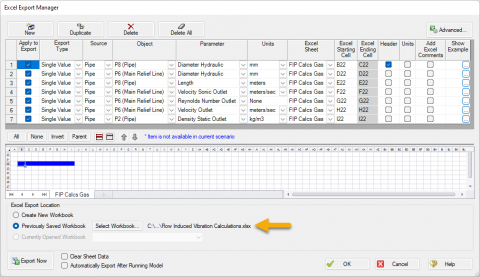AFT Blog
Learn how to use AFT Fathom and AFT Arrow to help calculate the Likelihood of Failure (LOF) for Flow Induced Vibration (FIV), Acoustic Induced Vibration (AIV), and Flow Induced Pulsation (FIP) in accordance with Energy Institute Guidelines to avoid vibration induced fatigue failure. Introduction to Vibration Induced Fatigue and Failure Repeat...
In the modern world there are many things we take for granted – especially in first-world countries. Among them are the reliable availability of water and electricity. To our homes. To our workplaces. Just about everywhere. Engineers also take things for granted. One of those is reliable data on the properties of steam and water. But it was not alw...
As the original developer of AFT Arrow, I consider it as one of my babies. This month it is all grown up and now 25 years old. Back in March we came out with the latest new version AFT Arrow 8 – just as the COVID-19 crisis was emerging. Those who have taken an AFT Arrow seminar which I have taught (at least fifty classes and counting!) have likely ...
Almost every piping system has valves, and an accurate solution requires accurate valve losses. For incompressible systems, this is relatively straightforward. What happens when we introduce the complexities of compressible flow?
We are all shaped by our experiences as engineers. Our early experiences as young engineers are especially influential.
I first worked in the aerospace industry for five years and then the nuclear industry for two years. At each of these companies we relied heavily on a handbook written originally in Russian by a Russian engineer. I am talking about the Handbook of Hydraulic Resistance by I.E. Idelchik. This book is my "go to" book on any unusual pipe system configuration hydraulic calculations and, especially, with calculations at tees and wyes.
AFT Fathom and AFT Arrow both have the powerful ability to model heat transfer in pipes and heat exchangers, allowing you to represent these critical features of temperature-sensitive systems in your hydraulic model. However, without being able to see the affect heat transfer has on an entire system these features would be of limited usefulness. One of the most powerful aspects of AFT’s implementation of heat transfer is that energy is balanced across the entire system. For example, you can observe changes in pump or control valve operation when adding heat transfer to a remote part of a system. Looking at...
Previously, we talked about the Graph Guide, creating Stacked graphs and Dual-Y graphs, and visualizing the results using Animated graphs. This final installment will focus on the various ways to format graphs so they are exactly how you want them to look. In general, there are several ways to set the formatting for the various parts and regions of a graph. I will start with the model we made in the previous blog – the AFT Impulse model, ‘Pump Startup With Event Transient.imp’, which is installed in the Examples folder. Many of the formatting options are gathered together on the Formatting...



